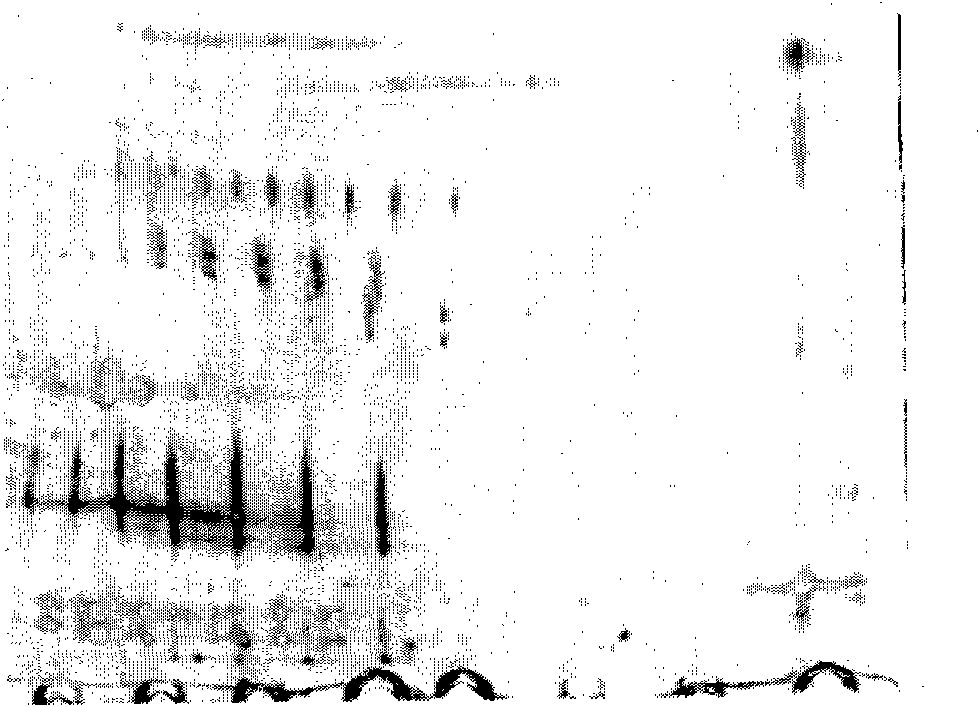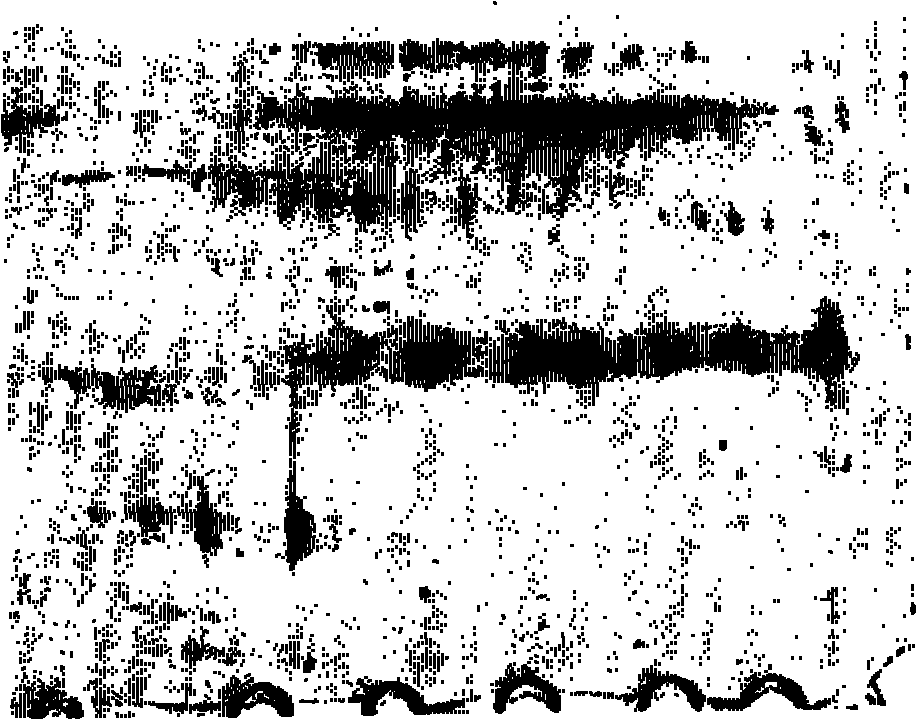Method for preparing saliva protein sample
A salivary protein and sample technology, which is applied in the field of preparation of whole salivary protein, can solve the problems of affecting the separation effect, sample volume error, viscous salivary mucin, etc., achieve high protein recovery rate, increase sample volume, The effect of improving stability
- Summary
- Abstract
- Description
- Claims
- Application Information
AI Technical Summary
Problems solved by technology
Method used
Image
Examples
Embodiment 1
[0015] Embodiment 1, saliva sample collection
[0016] Six saliva samples were obtained from healthy female graduate students in our laboratory. Aged 24 to 29 years old. The saliva collection time was from 9:00 to 12:00 in the morning, and water was fasted 2 hours before the collection. Sit quietly on a chair after gargling with water, swallow the saliva naturally within the first 5 minutes and start collecting it. After the oral saliva has accumulated to a certain amount, spit it into a 50ml centrifuge tube placed in an ice bath, and collect a total of 6ml of saliva samples ( 3ml for each group), the collection time is 5-10min.
Embodiment 2
[0017] Embodiment 2, salivary protein sample preparation and determination
[0018] Method 1: Centrifuge the sample collected in Example 1 for 15 minutes (4°C, 800×g), absorb the supernatant, add twice the volume of 0.15% dilute acetic acid, mix well, and centrifuge again for 60 minutes (4°C, 14000×g) , absorb the supernatant, put it into a dialysis bag and dialyze with double distilled water for 5h, and then use polyethylene glycol 20000 to concentrate to about 300μl.
[0019] Method 2: Centrifuge the sample collected in Example 1 for 15 minutes (4°C, 800×g), absorb the supernatant, centrifuge again for 60 minutes (4°C, 14000×g), absorb the supernatant, and take the pre-cooled to 4°C Acetone, according to the ratio of 4:1 (acetone: sample), pour into the sample, mix well, store at -20°C for 24h, take out the sample, centrifuge for 60min (4°C, 14000×g), discard the supernatant, see the centrifuge tube There was a white flocculent substance at the bottom, and the precipitate w...
Embodiment 3
[0031] Embodiment 3, the influence of acetic acid volume and concentration on the preparation of salivary protein sample
[0032] 1. The experimental method is as follows:
[0033] (1) Saliva sample collection
[0034]The saliva collection time was from 9:00 to 12:00 in the morning, and water was fasted 2 hours before the collection. Sit quietly on a chair after rinsing your mouth with clean water, swallow the saliva naturally within the first 5 minutes, and start collecting it. After the oral saliva has accumulated to a certain amount, spit it into a 50ml centrifuge tube placed in an ice bath, and collect a total of 12ml of saliva samples ( 100 μl per tube, 6 tubes per group).
[0035] (2) Different volumes of dilute acetic acid precipitation method for salivary protein sample preparation
[0036] The collected samples were centrifuged for 15min (4°C, 800×g), the supernatant was drawn, and 12 times, 8 times, 4 times, 2 times, 1.5 times, 1 times, 0.5 times, 0 times the volu...
PUM
| Property | Measurement | Unit |
|---|---|---|
| molecular weight | aaaaa | aaaaa |
| molecular weight | aaaaa | aaaaa |
Abstract
Description
Claims
Application Information
 Login to View More
Login to View More - R&D
- Intellectual Property
- Life Sciences
- Materials
- Tech Scout
- Unparalleled Data Quality
- Higher Quality Content
- 60% Fewer Hallucinations
Browse by: Latest US Patents, China's latest patents, Technical Efficacy Thesaurus, Application Domain, Technology Topic, Popular Technical Reports.
© 2025 PatSnap. All rights reserved.Legal|Privacy policy|Modern Slavery Act Transparency Statement|Sitemap|About US| Contact US: help@patsnap.com



